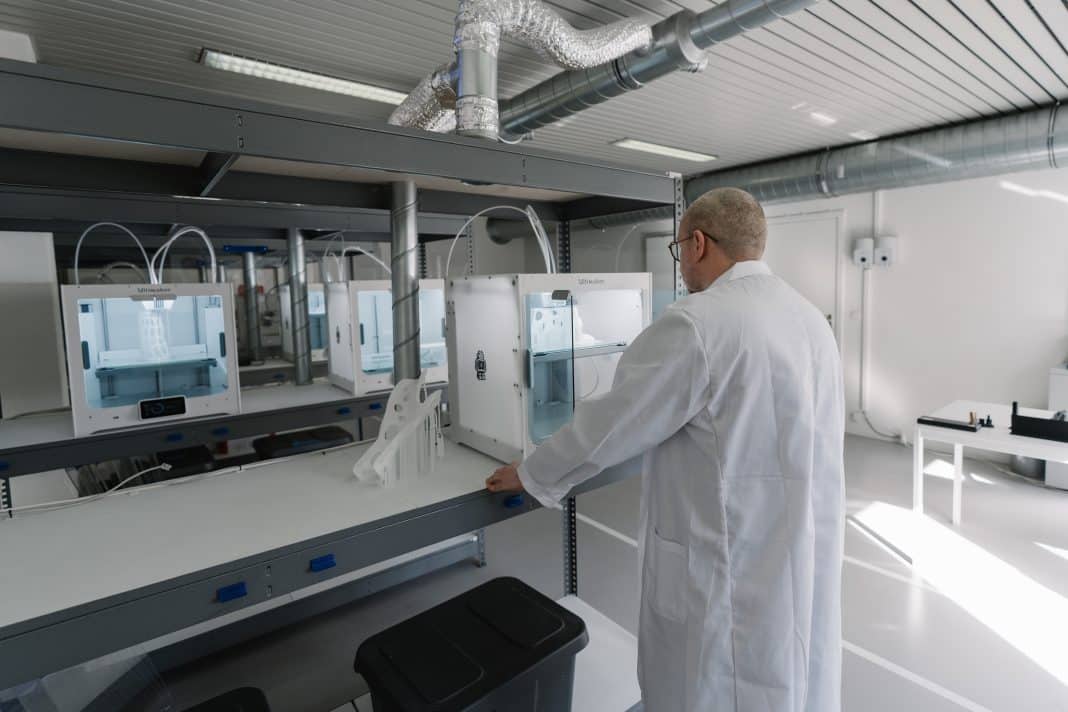The medical industry is experiencing a remarkable transformation with the rapid progress of 3D printing technology. Additive manufacturing has opened up unprecedented possibilities in addressing various challenges faced by healthcare professionals. Among the numerous 3D printing technologies, stereolithography (SLA) has emerged as a game-changer in medical device development and patient care. This article explores the multitude of benefits offered by SLA 3D printing and delves into its five key applications within the medical sector.
Benefits of Stereolithography in Medical 3D Printing
Across the globe, the medical industry is embracing 3D printing as a pioneering tool to advance patient care, optimise surgical procedures, and expedite product development cycles. SLA, one of the oldest and most widely used industrial 3D printing technologies, utilises a high-powered laser to selectively cure photosensitive resin layer by layer. It offers numerous advantages ideally suited for medical 3D printing:
- Accuracy: SLA boasts exceptional precision with tight tolerances of ± 0.10-0.15mm, resulting in dimensionally accurate parts crucial for patient-specific devices.
- Detail: The high resolution of SLA 3D printing enables the production of intricate structures with a smooth surface finish, allowing for an unprecedented level of detail.
- Versatility: SLA is compatible with a wide range of materials, including biocompatible and sterilisable resins suitable for critical medical applications.
- Efficiency: By expediting prototyping and shortening production cycles, SLA enhances product development efficiency, accelerating the delivery of innovative medical devices and improving patient care.
Moreover, SLA eliminates the need for expensive tooling, making it a cost-effective solution for prototyping and low-volume production. This affordability contributes to reducing the financial burden on healthcare systems, thus increasing accessibility to medical care.
Applications of SLA 3D Printing in Healthcare
The numerous benefits and cost-effectiveness of SLA 3D printing have resulted in its widespread adoption across various fields within the medical industry. Let’s explore five notable applications:
- Anatomical Models for Surgery Preparation: 3D printing enables the creation of patient-specific anatomical models based on CT scans or MRI data. These models provide surgeons with tangible and visual representations of the patient’s unique anatomy, facilitating pre-surgical planning and intraoperative guidance. SLA’s exceptional accuracy ensures precise, detailed replicas, thereby improving surgical outcomes.
- Patient-Specific Medical Devices: SLA empowers the production of customised medical devices, prosthetics, and implants tailored to individual patients’ needs and anatomy. This customisation enhances functionality, longevity, and comfort. For example, 3D printed hearing aids can be precisely shaped to fit the ear canal, ensuring optimal performance and patient satisfaction. SLA’s compatibility with various materials enables the creation of a wide array of medical devices, from dental aligners to finger splints.
- Surgical Instruments: SLA is utilised in the manufacture of surgical instruments such as guides, forceps, clamps, and cutting tools. These instruments are designed to assist surgeons in performing precise and complex surgical procedures. Custom surgical guides, created using high-resolution SLA printing, facilitate accurate screw placement during orthopedic surgery, thereby reducing risks and enhancing surgical success.
- Emergency Medical Supplies: In critical situations like pandemics or armed conflicts, where traditional supply chains may be disrupted, SLA 3D printing plays a crucial role. It enables the rapid production of essential medical supplies like Personal Protective Equipment (PPE) and virus testing swabs. This capability proves invaluable in saving lives when the demand for supplies is high, and conventional procurement methods face challenges. Notably, Glia, a Canadian company, has developed 3D printed tourniquets to aid life-saving efforts in Ukraine.
- Rapid Prototyping for Clinical Trials: SLA’s fast lead times are highly beneficial in medical research and development, particularly for rapid prototyping. It allows for accelerated design iterations of medical devices, manufacturing tools, training instruments, and more. This expedites the transition from the conceptual stage to clinical trials, significantly reducing the time-to-market for new medical innovations and potentially saving lives in the process.
In conclusion, stereolithography is a pivotal technology shaping the future of the medical industry, offering diverse applications across various healthcare domains. With continued advancements in 3D printing technology, the scope of SLA will expand further, enhancing the precision, personalisation, and efficiency of medical services for patients in the UK and beyond. Contact LPE today to discover more about our SLA 3D printing service.


